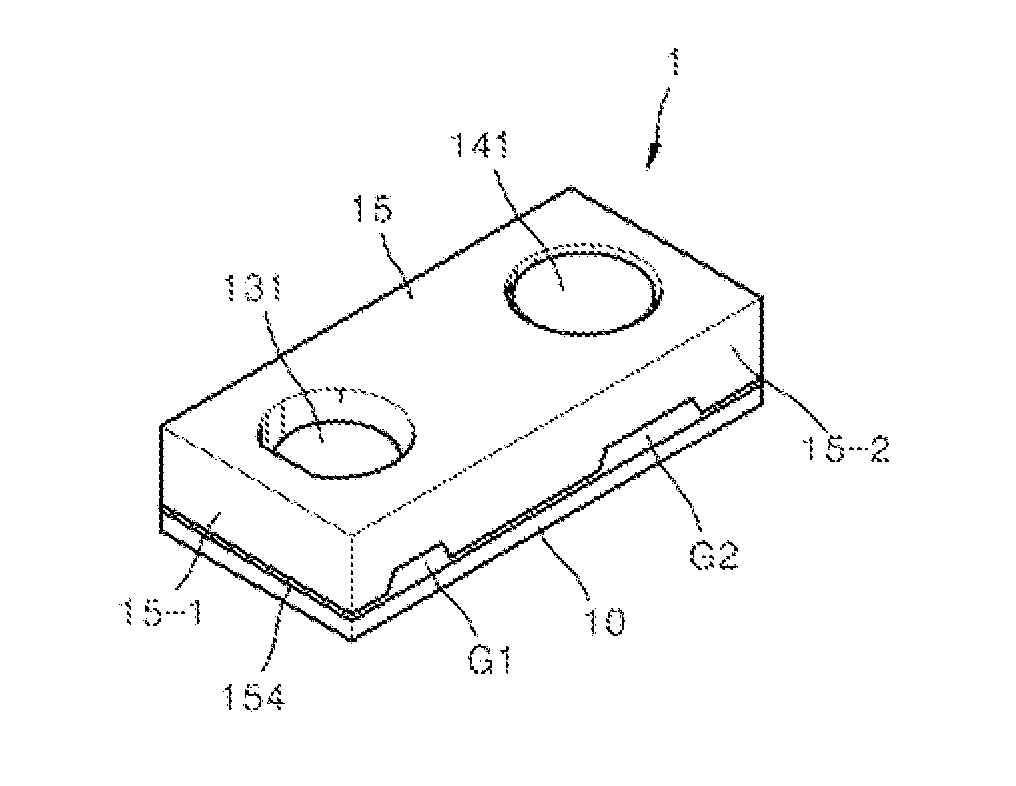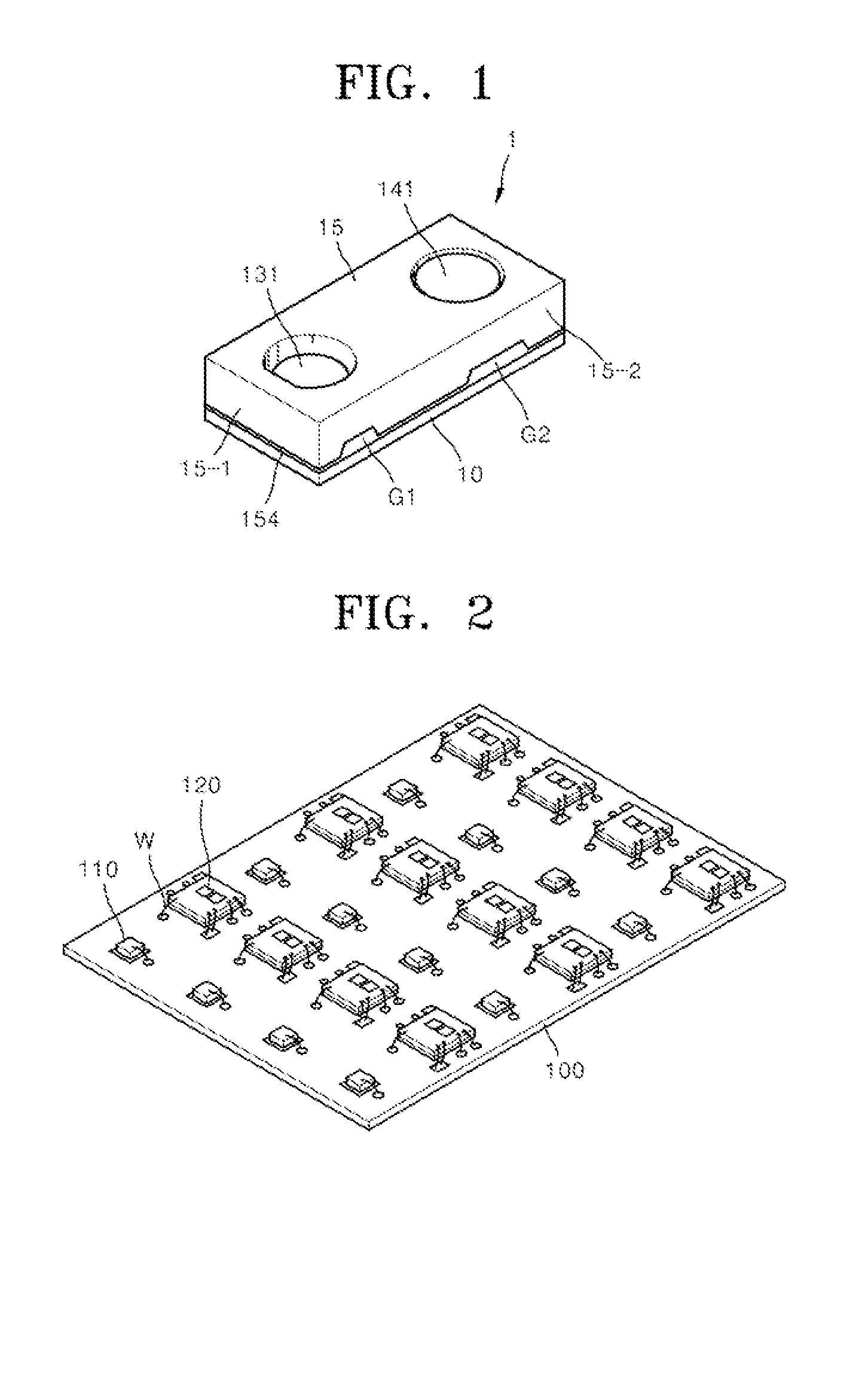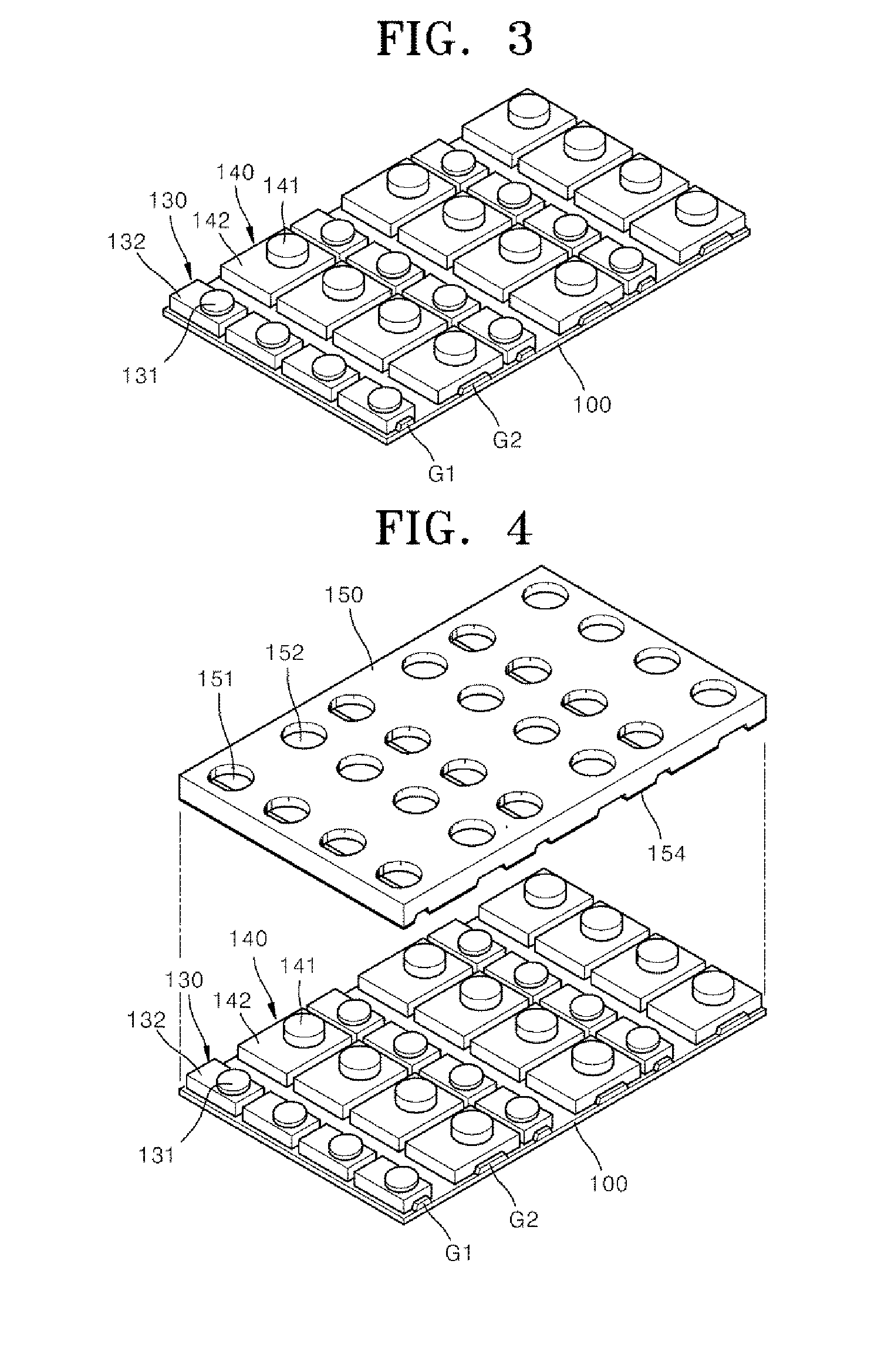Proximity luminance sensor and method for manufacturing same
a technology of luminance sensor and manufacturing method, which is applied in the direction of photometry using electric radiation detectors, optical radiation measurement, instruments, etc., can solve the problems of increasing the manufacturing cost of the housing, affecting the quality of the product, so as to reduce the optical interference phenomenon, reduce the manufacturing cost and manufacturing time, and prevent the effect of lens contamination or damag
- Summary
- Abstract
- Description
- Claims
- Application Information
AI Technical Summary
Benefits of technology
Problems solved by technology
Method used
Image
Examples
Embodiment Construction
Technical Problem
[0008]There are two conventional methods of manufacturing proximity luminance sensors.
[0009]In the first conventional method of manufacturing a proximity luminance sensor, a light-emitting lens unit and a light-receiving lens unit, both made of transparent material, are molded first on a light-emitting chip and a light-receiving chip in a printed circuit board array, respectively, and then a blocking wall made of opaque material is molded later so as to prevent crosstalk phenomenon in which a light generated from the light-emitting chip is directly transmitted to light-receiving chip.
[0010]However, in the first conventional method of manufacturing a proximity luminance sensor, the light-emitting lens unit and the light-receiving lens unit may be contaminated by the opaque material during the molding of the blocking wall.
[0011]In the second conventional method of manufacturing a proximity luminance sensor, a light-emitting lens unit and a light-receiving lens unit, b...
PUM
 Login to View More
Login to View More Abstract
Description
Claims
Application Information
 Login to View More
Login to View More - R&D
- Intellectual Property
- Life Sciences
- Materials
- Tech Scout
- Unparalleled Data Quality
- Higher Quality Content
- 60% Fewer Hallucinations
Browse by: Latest US Patents, China's latest patents, Technical Efficacy Thesaurus, Application Domain, Technology Topic, Popular Technical Reports.
© 2025 PatSnap. All rights reserved.Legal|Privacy policy|Modern Slavery Act Transparency Statement|Sitemap|About US| Contact US: help@patsnap.com



